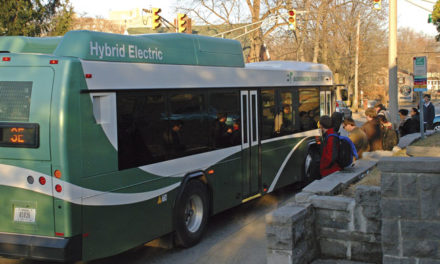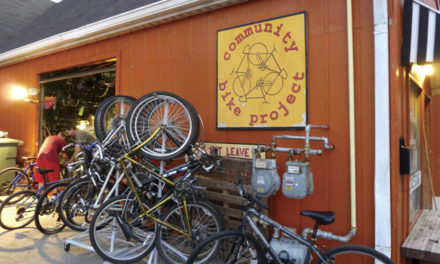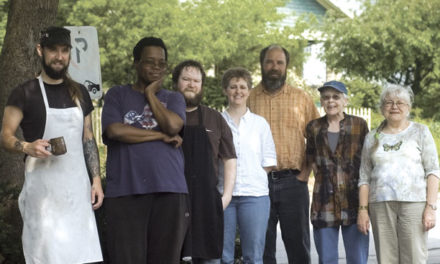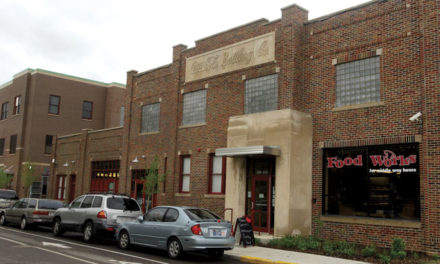
Modern Shawnee pottery making. Courtesy photo
BY PETER DORFMAN
Got a mysterious Native American artifact you’d love to identify? Bring it to the Glenn A. Black Laboratory of Archaeology. Indiana University archaeologists hold Artifact Office Hours the first and third Thursday of every month at the lab at 423 N. Fess Ave. They’ll examine your find and do their best to determine what it is and where it came from.
“Recently, somebody brought in a stone, probably from Central America, with an interesting face carved on it,” says April Sievert, the lab’s director. “People have brought in some amazing Native American ceremonial pipes. We won’t offer an appraisal — that’s not our mission. But we can offer historical insights.”
That’s just one reason to visit the lab and museum, which shares a building with the Mathers Museum of World Cultures. The lab is named for Glenn A. Black, who led the excavation of Angel Mounds, near Evansville, arguably Indiana’s most important native archaeological site. After Black’s death in 1964, IU, together with the Department of Conservation and the Indiana Historical Society, established the laboratory to house the artifact collections of the Historical Society, including the Angel Mounds finds. Eli Lilly, who had funded Black’s work since the 1930s, contributed his own collection of ecological materials, books, and papers.
Much of the collection is from native cultures that predate the first contact with Europeans in the early 1700s. But there are post-contact artifacts as well, including collections from European settlements such as the French Fort Ouiatenon, built in 1717 near Lafayette, considered Indiana’s first fortfied European settlement.
The gallery displays curated selections from the millions of objects housed at the lab.
This fall it will collaborate with the Shawnee tribe, which is rediscovering its pottery traditions. “Our materials scientists are working with the Shawnee on an exhibit that includes pottery from an archaeological site we call Fort Ancient, on the Ohio River, along with new pottery being produced by modern Shawnee,” Sievert explains.
In addition to native cultures, the Glenn A. Black Lab provides unique perspectives on archaeology itself. The collection includes photographs and films, including some of the earliest films of archaeologists at work. The laboratory is open daily during the IU school year. For more information, visit gbl.indiana. edu or call 812-855-9544.















